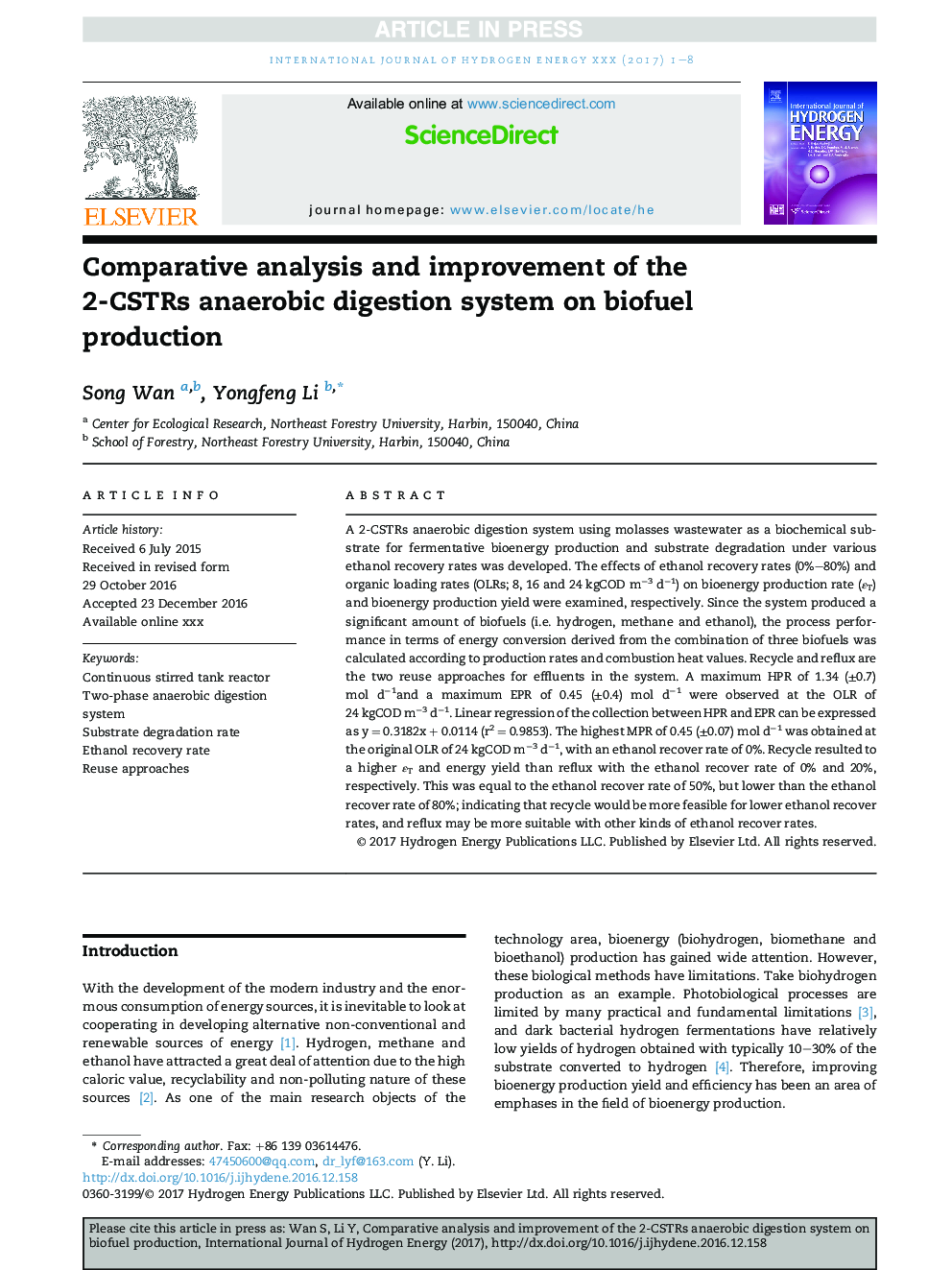| Article ID | Journal | Published Year | Pages | File Type |
|---|---|---|---|---|
| 5148357 | International Journal of Hydrogen Energy | 2017 | 8 Pages |
Abstract
A 2-CSTRs anaerobic digestion system using molasses wastewater as a biochemical substrate for fermentative bioenergy production and substrate degradation under various ethanol recovery rates was developed. The effects of ethanol recovery rates (0%-80%) and organic loading rates (OLRs; 8, 16 and 24 kgCOD mâ3 dâ1) on bioenergy production rate (εT) and bioenergy production yield were examined, respectively. Since the system produced a significant amount of biofuels (i.e. hydrogen, methane and ethanol), the process performance in terms of energy conversion derived from the combination of three biofuels was calculated according to production rates and combustion heat values. Recycle and reflux are the two reuse approaches for effluents in the system. A maximum HPR of 1.34 (±0.7) mol dâ1and a maximum EPR of 0.45 (±0.4) mol dâ1 were observed at the OLR of 24 kgCOD mâ3 dâ1. Linear regression of the collection between HPR and EPR can be expressed as y = 0.3182x + 0.0114 (r2 = 0.9853). The highest MPR of 0.45 (±0.07) mol dâ1 was obtained at the original OLR of 24 kgCOD mâ3 dâ1, with an ethanol recover rate of 0%. Recycle resulted to a higher εT and energy yield than reflux with the ethanol recover rate of 0% and 20%, respectively. This was equal to the ethanol recover rate of 50%, but lower than the ethanol recover rate of 80%; indicating that recycle would be more feasible for lower ethanol recover rates, and reflux may be more suitable with other kinds of ethanol recover rates.
Keywords
Related Topics
Physical Sciences and Engineering
Chemistry
Electrochemistry
Authors
Song Wan, Yongfeng Li,
